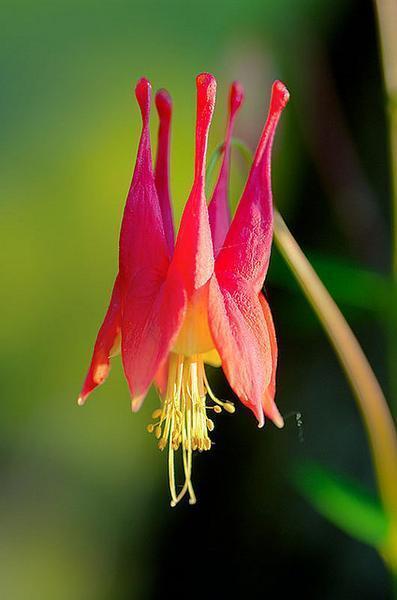Columbines, Gems in the Landscape
go.ncsu.edu/readext?793898
en Español / em Português
El inglés es el idioma de control de esta página. En la medida en que haya algún conflicto entre la traducción al inglés y la traducción, el inglés prevalece.
Al hacer clic en el enlace de traducción se activa un servicio de traducción gratuito para convertir la página al español. Al igual que con cualquier traducción por Internet, la conversión no es sensible al contexto y puede que no traduzca el texto en su significado original. NC State Extension no garantiza la exactitud del texto traducido. Por favor, tenga en cuenta que algunas aplicaciones y/o servicios pueden no funcionar como se espera cuando se traducen.
Português
Inglês é o idioma de controle desta página. Na medida que haja algum conflito entre o texto original em Inglês e a tradução, o Inglês prevalece.
Ao clicar no link de tradução, um serviço gratuito de tradução será ativado para converter a página para o Português. Como em qualquer tradução pela internet, a conversão não é sensivel ao contexto e pode não ocorrer a tradução para o significado orginal. O serviço de Extensão da Carolina do Norte (NC State Extension) não garante a exatidão do texto traduzido. Por favor, observe que algumas funções ou serviços podem não funcionar como esperado após a tradução.
English
English is the controlling language of this page. To the extent there is any conflict between the English text and the translation, English controls.
Clicking on the translation link activates a free translation service to convert the page to Spanish. As with any Internet translation, the conversion is not context-sensitive and may not translate the text to its original meaning. NC State Extension does not guarantee the accuracy of the translated text. Please note that some applications and/or services may not function as expected when translated.
Collapse ▲This article was written by Gail Griffin, Extension Master Gardener℠ Volunteer for North Carolina Cooperative Extension in Lee County.
Spring is finally here and nature is rewarding our patience with long-awaited warmth and, hopefully, sunshine. Trees, shrubs, and perennials are expressing their show of solidarity by bringing forth blossoms attracting bees, butterflies, and hummingbirds. Columbines are among the early spring bloomers that provide a great source of nectar for our pollinators and if you don’t mind a little quirky in your landscape, this may be the plant for you.
The Eastern red columbine is a member of the buttercup family. It is found in woodland habitats throughout the eastern United States and Canada. It has been cultivated in the U.S. since the 1600s. Native Americans used the crushed seed for medicinal purposes. As part of its uniqueness, spur-like tubes that point up from the floral petals resemble claws or talons of eagles, hence the genus name Aquilegia. They require shade to partial shade and tolerate dry to moderately moist soils as long as they drain well. They can adapt to clay soils if amendments have been added, and can be used in rain gardens.
medicinal purposes. As part of its uniqueness, spur-like tubes that point up from the floral petals resemble claws or talons of eagles, hence the genus name Aquilegia. They require shade to partial shade and tolerate dry to moderately moist soils as long as they drain well. They can adapt to clay soils if amendments have been added, and can be used in rain gardens.
This native columbine blooms from four to six weeks in early spring. It grows anywhere from two and one half to three feet tall. Showy red and yellow flowers arise from thin stalks above mounding foliage making it a good choice as a plant in back of a border. Because the blooms fade in midsummer, a variety of other plants can help fill in the void with successive bloom times. Companion plants with the same light and soil requirements include perennials like milkweed, Siberian iris, and muhly grass and shrubs like Virginia sweetspire. Columbines are short-lived, lasting three to five years. However, they do self-sow, forming seed pods as blossoms mature. Seedlings bloom the second year. This prolific characteristic makes them a good candidate for a naturalized area as the garden becomes colonized, so give them plenty of space. Leaf miners appear to be the most serious pest.
Hybrid columbines have been developed resulting in varying heights and colors. All are self-sowing, but it should be noted that hybrid offspring may not have the same traits, including coloration, as the parent plant, especially if other varieties are nearby. It is the proverbial box of chocolates, you never know what you’re going to get. So, if you are up for something a little different, try one of these gems in your landscape. They might just make glad an ordinary day.
To learn more about columbines, go to
Rain Garden Plant: Aquilegia Canadensis – Eastern Red Columbine
or check out the North Carolina Extension Gardener Plant Toolbox.
Gail Griffin is an Extension Master Gardener Volunteer with North Carolina Cooperative Extension in Lee County.




